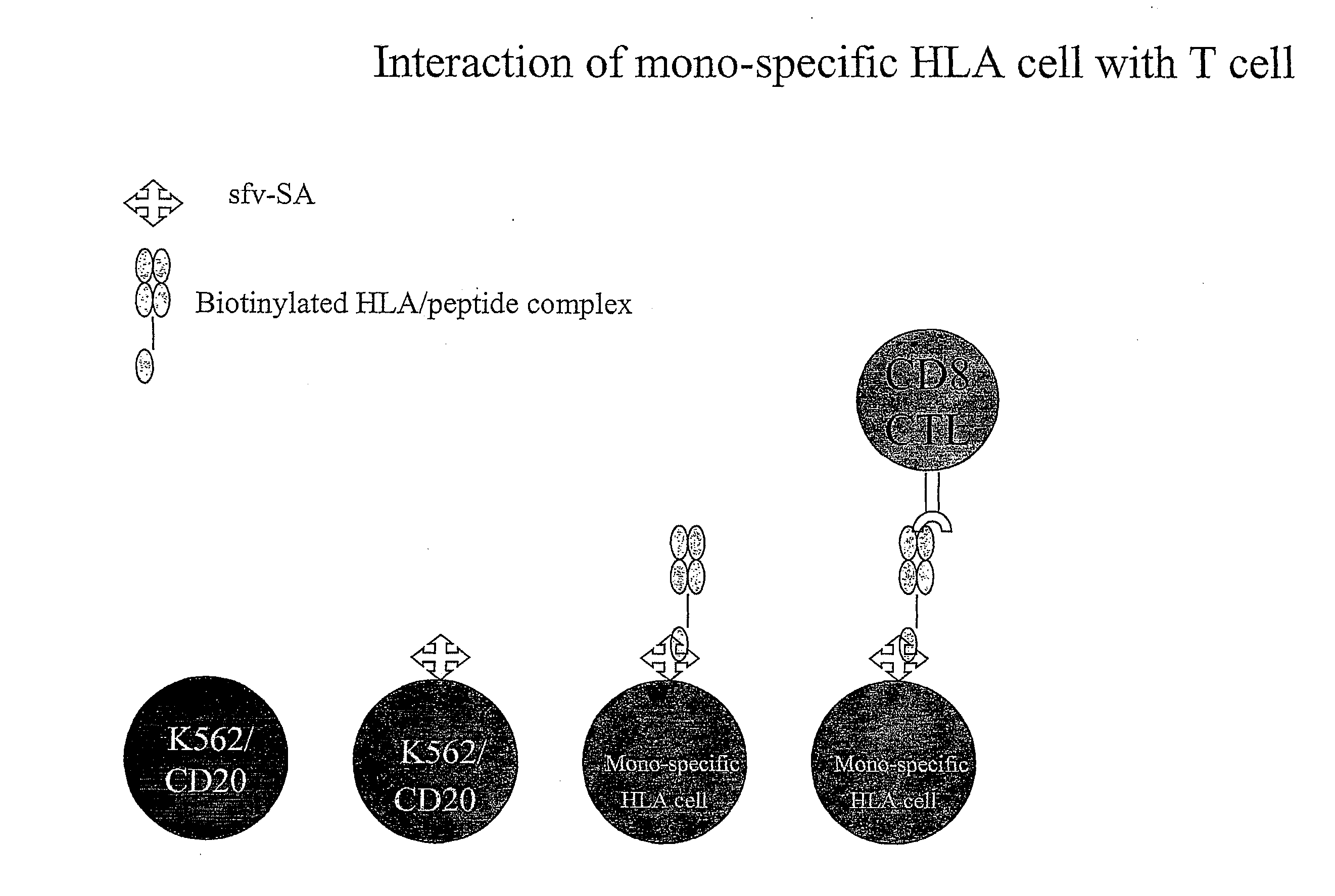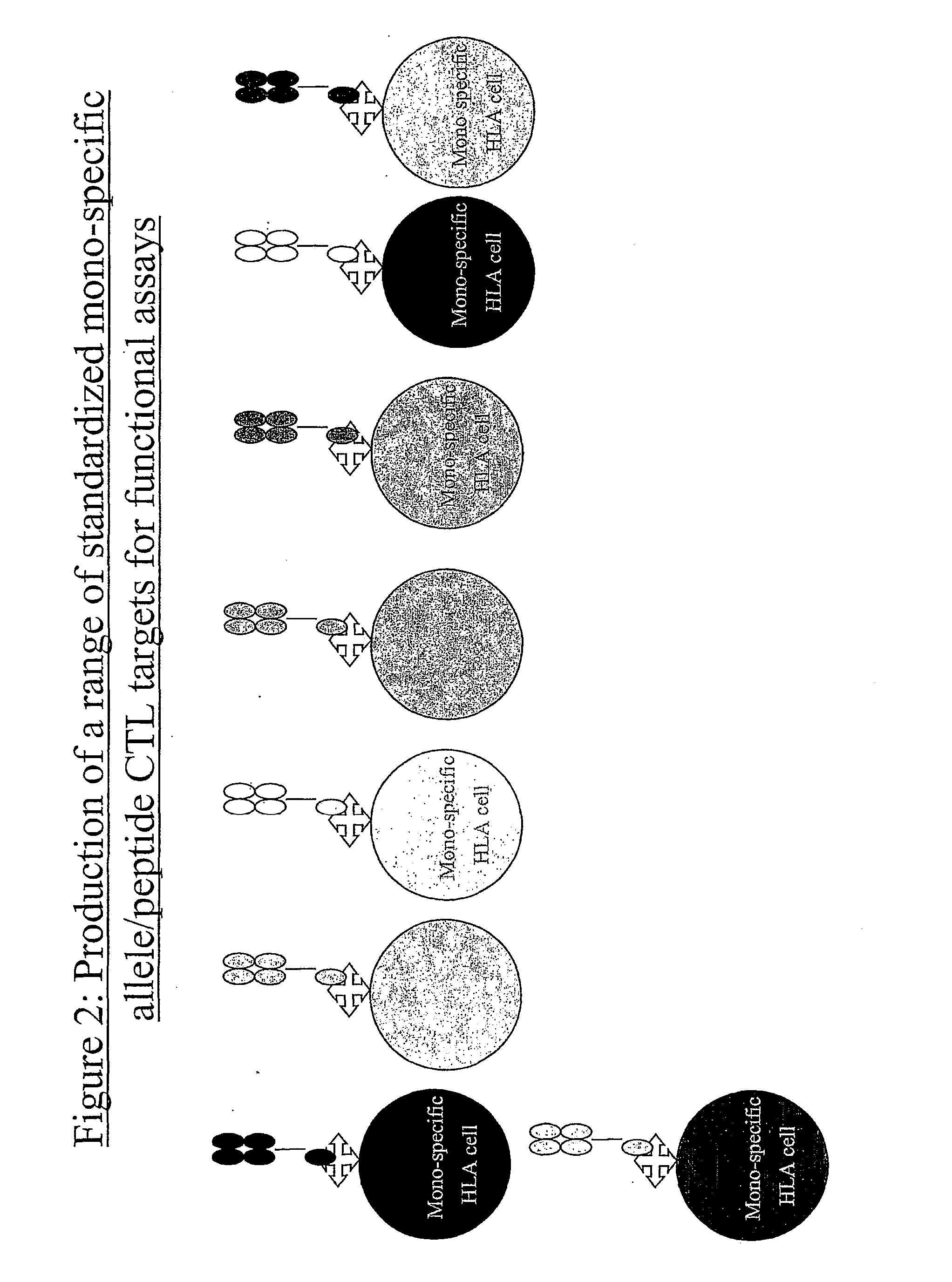Complexes and methods
a diagnostic system and complex technology, applied in the field of complex methods, can solve the problems of long time-consuming and laborious, clear problem of having a sufficient range of cloned, and large logistical problems, and achieve the effect of universal applicability of the system, greater control, and greater elimination of confounding influences
- Summary
- Abstract
- Description
- Claims
- Application Information
AI Technical Summary
Benefits of technology
Problems solved by technology
Method used
Image
Examples
example 1
Making Cells
[0136] In this example, cells according to the present invention are made.
[0137] The starting cells are K562 cells.
[0138] The capture moiety is CD20.
[0139] Nucleic acid encoding CD20 cloned into a gene expression construct capable of driving expression of CD20 in K562 cells.
[0140] This expression construct is transfected into K562 cells.
[0141] Stable transfectants are selected.
[0142] Cell surface expression of the CD20 capture moiety is confirmed using anti-CD20 antibodies.
example 1a
Manufacture of Complexes
[0143] The cells of example 1a are expanded by culture in vitro.
[0144] B9E9 single chain antibody-streptavidin fusion protein sfvSA B9E9 is incubated with the cells and the excess washed away.
[0145] Biotinylated HLA-class I bearing the Melan-A peptide is incubated with the cells and the excess washed away.
[0146] Thus a complex according to the present invention is made.
example 2
[0147] Applying this technology to the Elispot environment is done in the following way.
[0148] A HLA class I and class II negative cell line (such as K562)
[0149] Transfect with the gene for capture moiety such as human CD20 (or another antigen stably expressed on the cell surface)
[0150] Use an antibody to the capture moiety bearing streptavidin or biotin (either chemically or recombinantly attached) to attach to the capture moiety (eg. cell surface antigen).
[0151] Sequentially attach an HLA class I or II complex (joined chemically or recombinantly to biotin / streptavidin).
[0152] This system allows the production of a wide range of mono-specific HLA class I or II targets to any desired allele / peptide complex. Some benefits of this are; [0153] A / The mono-specific cells will have near identical characteristics when used on different occasions. [0154] B / Only a single cell line will need to be kept in culture, which can be used with any allele [0155] C / As the cells are oth...
PUM
| Property | Measurement | Unit |
|---|---|---|
| volume | aaaaa | aaaaa |
| cell surface | aaaaa | aaaaa |
| time | aaaaa | aaaaa |
Abstract
Description
Claims
Application Information
 Login to View More
Login to View More - R&D
- Intellectual Property
- Life Sciences
- Materials
- Tech Scout
- Unparalleled Data Quality
- Higher Quality Content
- 60% Fewer Hallucinations
Browse by: Latest US Patents, China's latest patents, Technical Efficacy Thesaurus, Application Domain, Technology Topic, Popular Technical Reports.
© 2025 PatSnap. All rights reserved.Legal|Privacy policy|Modern Slavery Act Transparency Statement|Sitemap|About US| Contact US: help@patsnap.com



